Early education in India commenced under the supervision of ‘Guru“. Initially, education was hospitable all and seen together of the methods to realize Moksha or enlightenment. Later due to the superiority complex, education was imparted on the basis of castes with the Brahmins learning about scriptures, Kshatriya the art of warfare, The Vaishya learned about business and commerce while none or minimal education was imparted to lowermost castes, the Shudras.
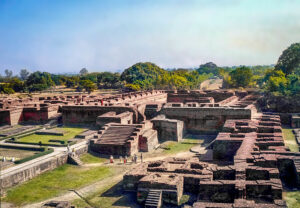

Education in its traditional form was closely related to religion.
Among the heterodox schools of learning were the Jain and Buddhist schools. Buddhist education was more inclusive and Buddhist education centers were urban institutes of learning, such as Taxila and Nalanda where grammar, medicine, philosophy, logic, metaphysics, arts, and crafts were taught.
Taxila was the earliest recorded center of higher learning in India in the 5th century B.C. Chanakya, a brahmin teacher was among the most famous teacher of Taxila. Nalanda University was the oldest university system within the world. These institutions continue to function well and were attended by students from India, Bhutan, Tibet, and central Asia.
The Brahmin gurus historically offered education by means of donations rather than charging fees from students. Later temples became the center of education. Religious education was compulsory, but the secular subject was also. Students were required to be Brahmacharis or celibates. The book of laws, “Manusmriti” and therefore the Treatise on statecraft the “Arthashastra” were the influential works of that era.
The Medieval Period
Buddhist institutions of learning giving way to a resurgent tradition of Brahminism during this period. Scholars from India journeyed to China to translate Buddhist texts. Chinese scholars like Xuanzang and Yi Jing arrived in Indian institutions of learning to survey Buddhist texts. Dharmendra from the 10th century from Nalanda journeyed to China and translated a number of texts.
With the arrival of Islam in India, the normal methods of education increasingly came under Islamic influence. Pre-Mughal rulers such as Qutb-u-din tughlaq and other Muslim leaders initiated institutions that imparted knowledge. Scholars like Nizamuddin Auliya and Moinuddin Chisti became prominent educators and established Islamic monasteries. Students from Bukhara and Afghanistan visited India to review humanities and science.
Islamic institutions of education in India inducted traditional Madrasas and Maktabs which taught grammar, philosophy, mathematics, and law influenced by Greek tradition.
The education system in the Mughal dynasty especially under Akbar favored courses like medicine, agriculture, geography, Patanjali works in Sanskrit. The traditional science in this period was influenced by the ideas of Aristotle, Bhaskara2, Charaka, Ibsen. Even Aurangzeb favored teaching subjects like administration. During the Mughal dynasty, the more intolerant Ottoman school of manque education came to be gradually substituted by the more relaxed Maqui school.
The Colonial Era.
The colonial-era saw a high difference of opinion among the colonialists themselves about education for Indians. They were divided into two schools– the orientalists, who believed that education should in Indian languages like Sanskrit or Persian, or Utilitarians(Anglicists) who strongly believed that India has nothing to teach its own subject but English.
Lord Macaulay introduced English education in India in 1835. He called an education system that would create a category of anglicized Indians who function cultural intermediaries between British and Indians.
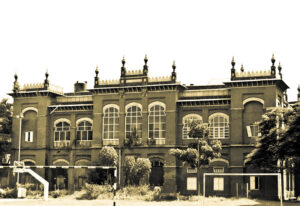

The University of Madras was founded in 1857 under the leadership of a completely clean caste and mainly brahmans. The Madras medical college opened in 1835 and admitted women and in 1894, the women’s Christian medical college, an exclusive medical school for women was established in Ludhiana, Punjab. Mayo College was founded in 1875 was the primary modern institution for Muslims in India. By 1920 it became the Aligarh Muslim University.
In 1882 there were 4 universities and 67 colleges, by 1901 there were 5 universities and 145 colleges, in 1922 there were 14 universities and 167 colleges and in 1947 there were 21 universities and 496 colleges operational . There were 4 colleges of engineering in 1847, and by 1930 India has 10 technical institutions.
Modern India.
Modern India
India has free and compulsory education between the age of 6 and 14. As per the annual statistics of education report(ASER) 2012, 96.5% of all rural children between the ages of 6 to 14 were enrolled in school.
A significant number of seats are reserved for weaker sections of the society in all educational institutions affiliated with the central and state government. The sections include Scheduled castes, scheduled tribes, and other backward classes.
Most private schools in India are modeled after British Public Schools, which are a group of older, expensive, and exclusive paying private independent schools. The number of private schools in India is low with 7% in primary,21% in the middle, and 32% in secondary.
According to the census of 2011, anyone who is above 7 years of age can read and write with understanding in ant language is said to be literate. In the 2011 census, the literacy rate in India was 74.07%. The youth literacy rate within the age group of 15 to 24 is 81.1%. The literacy rate among males is 84.4% while it is 74.4% among females.
School Education in India
The pupil-to-teacher ratio within the general public establishment for primary education is 35:1. However, teacher absenteeism in India is as high as 25%.
In terms of facilities, a study of 188 government-run schools found that 59% of the schools no drinking water and 89% have no toilets.
To improve the varsity education system in India, the govt has laid down many programs like National Policy of Education(NPE), Universal Elementary Education(UEE), Sarva Shiksha Abhiyan(SSA), Right to Education(RTE), Mid-day meal scheme, Mahila Sankhya program, scheme to permit quality education in Madrasas and Scheme for Infrastructure Development in Minority Institutes(I.D.M.I.).
Since India has a (10+2 +3 ) pattern of education, the policy of the government is to make secondary education of good quality available, accessible and affordable to all young students in the age group of 14-18 years. The minimum age is 15 years for secondary schools and 17 years for senior board of education exams.
The National Council of Education Research & Training is the APEX body for curriculum-related matters for school education in India. Other curriculum bodies governing school education are the Central Board of secondary education(CBSE), Council for Indian School certificate exam(CISCE), National Institute of Open Schooling, National Institute of Open Schooling (NIOS), and state government board.
National Council of Education, Research & Training(NCERT) is an apex resource organization to assist and advise central & State governments on academic matters in school education. Organizations like Kendriya Vidyalaya Sangathan(KVS) to provide uninterrupted education to wards of central govt. employes, Navodaya Vidyalaya Samiti(NVS) to provide good quality education to talented children, National Bal Bhawan aiming at enhancing the creative potential of children, and Information of Communication Technology(ICT) has been set up to improve school education in India.
Higher Education in India


India’s higher education system is the third-largest in the world after China and the USA. The main administration of the tertiary level is that the University Grants Commission(UGC) which enforces its standards, advises the govt , and helps coordinate between the state and center.
Regulatory Authorities like UGC and AICTE are trying very hard to extirpate the menace of personal universities that are running courses with none affiliation or recognition. The Indian government has failed to check on these education shops which are running by the businesses and political solely for the purpose of making money. Many of these private colleges do not fulfill the criterion by the government and the central bodies ( UGC, AICTE, MCI, BCI, etc.)
The Government of India is conscious of the plight of the upper education sector and has been trying to bring reforms, however, many bills are still awaiting discussion and approval in the Parliament.
One of the approaches to form the internationalization of Indian education effective is to develop a coherent and comprehensive policy that aims at infusing excellence, bringing institutional diversity, and aids in capacity building.
The department of upper education(MHRD), is liable for the general development of the essential infrastructure of the upper education sector, both in terms of policy and planning.
Higher Education is that the shared responsibility of both the Centre and therefore the States. The coordination and determination of standards in Universities & Colleges are entrusted to the UGC and other statutory regulatory bodies.
Central University: A university established or incorporated by a Central Act.
State University: A university established or incorporated by a Provincial Act or by a State Act.
Private University: A university established through a State/Central Act by a sponsoring body viz. A Society registered under the Societies Registration Act 1860, or the other corresponding law for the nonce effective during a State or a charitable trust or a Company registered under Section 25 of the businesses Act, 1956.
Deemed-to-be University: an establishment is usually referred to as Deemed University, refers to a high-performing institution, which has been so declared by the Central Government under Section 3 of the University Grants Commission (UGC) Act, 1956.
Institution of National Importance: an establishment established by Act of Parliament and declared as Institution of National Importance.
Institution under State Legislature: ActAn Institution established or incorporated by a State Legislature Act.
The Indian government has set up councils and institutes for promoting specialized higher education in the technical field. Some of these councils are:
- Indian Council of science Research(ICSSR) for promoting science research, strengthening different disciplines, improving quality and quantum of research and its utilization in national policy formulation.
- Indian Council of Philosophical Research(ICPR) was set up in 1977 for the promotion of research in Philosophy and allied discipline.
- Indian Council of Historical Research(ICHR)was found out in 1972 to offer proper direction to historical research.
- National Council of Rural Institutes(NCRI) was found out in Hyderabad to market education in rural areas.
- National Assessment and Accreditation Council(NAAC) was set up to assess and accredit institutions of higher learning, universities, and colleges.
- India Institute of Advanced Study(IIAS) was established in 1965, is a residential center for free and creative themes and problems of life and thought.
- National Research Professorship(NRP) was established in 1949, honors distinguished academics and students in recognition of their contribution to knowledge.
- All India Council for Technical Education(AICTE) was established in 1987 and conducts the event of technical education within the country in the least levels, evolve suitable performance appraisal system for technical institutions and universities, lay down norms, standards for courses, curricula, physical and infrastructural facilities, etc.
- The Medical Council of India(MCI) was established under the MCI act 1956 amended in 1993 and is empowered to prescribe minimum standards for medical education required for granting recognized medical qualification or medical institution in India.
- Indian Council of Agriculture Research(ICAR) was established to meet the agricultural research and education needs of the country.
- National Council of Teachers Education(NCTE) facilitated the planning and development of the teacher education system in the country and regulates and maintains proper norms and standards in the teacher education system.
- Bar Council of India prescribes a class or category of the person entitled to be enrolled as an advocate.
- Council of Scientific Research &Training (CSIR) is known for its cutting-edge R&D knowledgebase in diverse areas and is a contemporary R&D organization. Having Pan- India’s presence, CSIR features a dynamic network of 38 national universities,39 outreach centers, 3 innovation complexes, and 5 units. CSIR R&D expertise and experience in embodied with about 4600 scientists supported by about 8000 scientific and technical personnel.CSIR is ranked 84th among 4851 institutions worldwide and is the only top 100 global institution.CSIR is ranked 17th in Asia and leads the country in the first position.
- Apart from the above institutes and councils India has 16 Indian Institutes of technology(IITs) which are regarded as the “Institute of National Importance”, 13 Indian Institute of Management(IIMs), and 1 Indian Institute of Science.
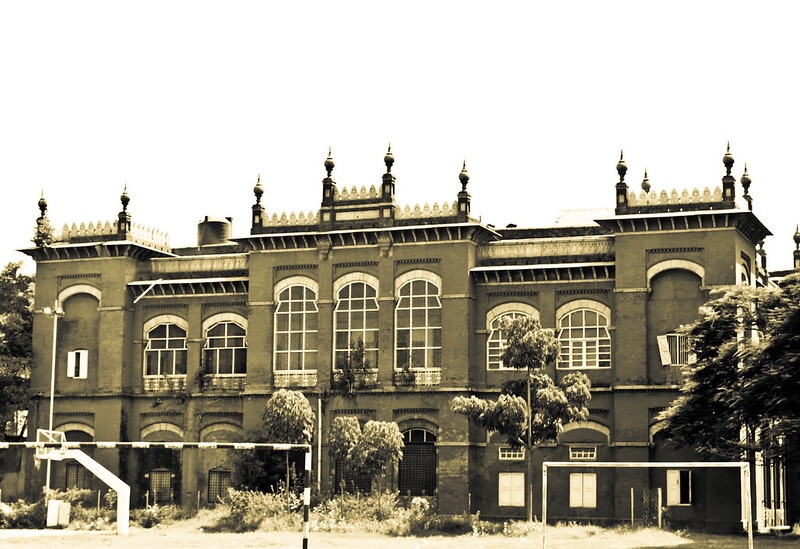


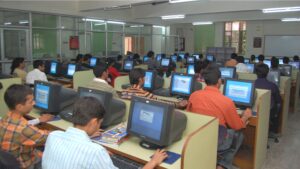
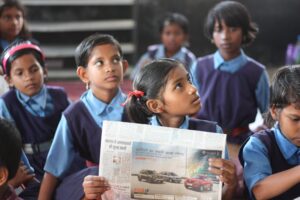
https://waterfallmagazine.com
Thanks a lot for sharing this with all folks you really know what you’re
talking approximately! Bookmarked. Please additionally discuss with my site =).
We can have a hyperlink alternate arrangement among us
http://e-halina.pl http://galoo.pl http://harwich-ahoy.co.uk http://za10froszy.pl http://my-place.pl http://bristolwedding.co.uk http://bestiae.pl http://hellheaven.pl http://e-oko.com http://tylko-kuchnie.pl http://harwich-ahoy.co.uk http://artexint.com.pl http://pandeo.pl http://w-sumie.com.pl http://weyden.com.pl http://san-escobar.com http://malgo.com.pl http://holard.net http://3az.pl http://etc-sa.com http://zoeva-marketing.com http://saw-iso.pl http://assm2012.pl http://wnetrzaikrajobraz.pl http://xanntop.com http://piszemydlaciebie.pl http://xannstat.com http://xnova-24.pl http://nopix.pl http://kb-direct.pl As an author, you will certainly be asked to publish
straight to the site as well as maintain an on-going journal of Looseness of the bowels Tune verses that will be permanently archived on this site for posterity.
http://dajplus.pl http://pandeo.pl http://raildude.pl http://memoriasdovicedo.org http://telesystem.com.pl http://my-place.pl http://eltying.com.pl http://o-kultury.pl http://eltying.com.pl http://fip.org.pl http://stylowysalon.com http://viptravel.com.pl http://overcomeback.com.pl http://notodo.pl http://dicetheatreonice.org Check out our timeline on how the School of Information has actually advanced over the years!
http://wieliczko.eu In the United States, Americans have actually currently learnt
that photo book is undoubtedly the means to go.
Enjoyable to earn, fun to view, you need to give
it a try.
https://www.siodla.pl http://skokowe.pl http://skokowe.pl
In 1969, Henson was invited to be a part of
a pilot for a new kids’s tv present called “Sesame Street.” Once the show acquired going, making commercials turned a factor of the previous.
In 1969, NBC aired an hour-lengthy Tv film directed and produced by Henson, which he co-wrote with Muppet writer Jerry Juhl.
The 1965, nine-minute-lengthy movie “Time Piece,” which
stars Henson, incorporates surreal imagery in addition to animation. Blau, Eleanor.
“Jim Henson, Puppeteer, Dies; The Muppets’ Creator Was 53.” The
brand new York Times. Never-ending relationship. The creator has been an excellent love and relationship guide
for over 12 years, so he brings his experience and expertise to his e-ebook.
Overall, I extremely suggest Reading Head Start Program as a every day objective to get the best outcomes over
an extended period of time. He stuffs Russell useless body in his white
decide-up truck, heads over to the hospital to find out if Jennifer is still alive and identifies himself as her husband.
She has complained solely mildly about how her
son usually introduced with him the feral cats he has fed for years on the grounds of
the hospital in Washington. They are sometimes trustworthy, respectful comments but they’re also attempting to make sure
there isn’t a complacency in the camp and to offer
an edge to the group.